

The Art Of Crewel Embroidery
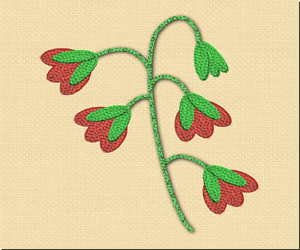
Crewel embroidery, an art form with deep historical roots, is a captivating textile craft characterized by intricate, raised stitches and colorful, textured designs. It's a testament to human creativity and patience, and its rich history, enduring appeal, and versatility make it a beloved embroidery technique for artists and enthusiasts alike.
A Stitch In Time: The History Of Crewel Embroidery
Crewel embroidery has a storied history that dates back over a thousand years. The word "crewel" is believed to have originated from the Old French word "croisel," which referred to a piece of metal or a slender wire used for embroidery. Crewelwork gained prominence in Europe during the 16th and 17th centuries and was particularly associated with England.
Characteristics Of Crewel Embroidery:
Crewel embroidery is known for its distinct characteristics, which set it apart from other embroidery techniques:
Use Of Crewel Wool: Crewel wool, a fine and twisted two-ply yarn, is the primary thread used in this technique. Its thickness and texture lend depth and dimension to the designs.
Raised Surface Stitches: Crewel embroidery often employs raised or padded stitches. These give the designs a textured, three-dimensional quality.
Botanical And Natural Motifs: Traditional crewelwork is renowned for its intricate depictions of botanical and natural motifs, including flowers, vines, and animals. These designs capture the essence of the natural world.
Linen Or Twill Fabric: Crewelwork is typically done on natural fibers like linen or twill, which provide a sturdy yet flexible canvas for the embroidery.
Varied Stitches: The craft incorporates a variety of stitches, including the chain stitch, satin stitch, long and short stitch, and more. These stitches are strategically combined to create intricate patterns and shading.
Versatility In Design And Application:
Crewel embroidery offers a wide range of design possibilities, making it suitable for various applications:
Home Decor: Crewelwork is frequently used to adorn cushions, draperies, and wall hangings, adding a touch of timeless elegance to interior spaces.
Fashion: The unique texture and vibrant colors of crewel embroidery make it a popular choice for embellishing clothing, accessories, and even footwear.
Art Pieces: Many contemporary artists employ crewel embroidery as a medium for creating intricate art pieces. These works often bridge the gap between traditional craft and contemporary art.
Adaptation And Innovation: Crewel embroidery, while steeped in tradition, has seen adaptations and innovations over the years. Some artists blend traditional crewelwork with modern design elements, creating a fusion of old and new. In addition, contemporary threads and materials have expanded the possibilities for crewel embroidery, allowing artists to experiment with different textures and styles.
Crewel embroidery is a captivating art form with deep historical roots and enduring appeal. It celebrates the beauty of the natural world through intricate designs, rich textures, and vibrant colors. As artists and enthusiasts continue to explore and reinvent this timeless craft, crewel embroidery remains a cherished form of creative expression, bridging the past and present with every carefully stitched motif. Whether you're an experienced embroiderer or just beginning your journey, crewel embroidery offers a canvas for your imagination to flourish, one textured stitch at a time.
From Vine To Glass
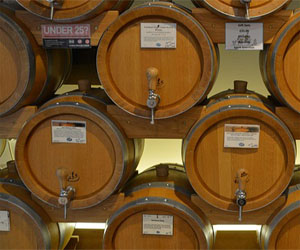 Harvesting: The timing of the grape harvest is a critical decision. Harvesting too early or too late can significantly impact the final product. In traditional wine production, grapes were often handpicked, allowing for the careful selection of ripe, healthy clusters. However, modern mechanical harvesters have also become popular for their efficiency.
Harvesting: The timing of the grape harvest is a critical decision. Harvesting too early or too late can significantly impact the final product. In traditional wine production, grapes were often handpicked, allowing for the careful selection of ripe, healthy clusters. However, modern mechanical harvesters have also become popular for their efficiency.
Crushing And Pressing: Once the grapes are harvested, they undergo a process known as crushing, where they are gently broken to release the juice. Depending on the type of wine being produced, the grapes may be destemmed, meaning the stems are removed, or they may be pressed directly. The juice obtained from this process is known as "must."
Fermentation: Fermentation is a crucial stage in wine production, as it's where the grape juice transforms into wine. Yeasts are introduced to the must to convert the sugars into alcohol. The choice of yeast and fermentation method can significantly influence the wine's flavor profile.
A Universal Craft With Unique Flavors
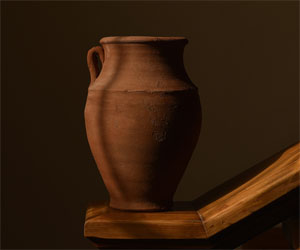 Asia: The Cradle Of Ceramic Art
Asia: The Cradle Of Ceramic Art
The roots of pottery in Asia run deep, with China often hailed as the birthplace of ceramics. Chinese pottery traditions date back thousands of years, and they have left an indelible mark on the global ceramic landscape. Iconic Chinese porcelain, known for its delicate blue and white designs, is world-renowned. Japanese pottery, on the other hand, is celebrated for its earthy, rustic aesthetics and meticulous craftsmanship. Countries like Korea, Thailand, and Vietnam have their unique ceramic traditions, showcasing the diversity within Asian pottery.
Crafting Your Inner World
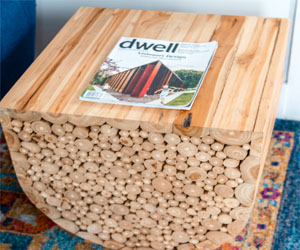 Creativity Unleashed: Woodworking provides a blank canvas on which you can paint your creativity. Whether you're crafting a meticulously designed piece of furniture, an ornate wooden sculpture, or a functional household item, every project is an opportunity for self-expression. The process of envisioning a project, selecting the wood, planning the design, and executing it involves making a series of artistic choices. These choices reflect your personal style, your interpretation of the world, and your emotions at the moment of creation.
Creativity Unleashed: Woodworking provides a blank canvas on which you can paint your creativity. Whether you're crafting a meticulously designed piece of furniture, an ornate wooden sculpture, or a functional household item, every project is an opportunity for self-expression. The process of envisioning a project, selecting the wood, planning the design, and executing it involves making a series of artistic choices. These choices reflect your personal style, your interpretation of the world, and your emotions at the moment of creation.
Emotional Release: For many woodworkers, the act of working with wood is a form of catharsis. The physicality of shaping and molding wood, combined with the rhythmic sounds of saws and the tactile feedback from the tools, can be a meditative and soothing experience. It's a way to release stress and express pent-up emotions. Some woodworkers even create pieces that embody their feelings, allowing them to externalize and share what might otherwise remain hidden.
Craftsmanship And Precision: Woodworking is an art that demands precision and craftsmanship. The attention to detail, the patience required, and the meticulous nature of the work all contribute to a sense of personal accomplishment. In each piece you create, you leave a piece of yourself—a testament to your dedication, skills, and the values you uphold.
Function Meets Form: Woodworking marries functionality with aesthetics. The objects you create serve practical purposes while also being beautiful. Your craftsmanship ensures that everyday items become works of art. The balance between utility and aesthetics allows you to infuse your creations with a sense of purpose and meaning.
Sharing Your Inner World: Woodworking also gives you the opportunity to share your inner world with others.
Nurturing Your Skin And The Planet
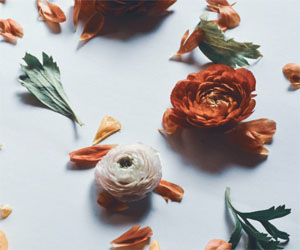 Biodegradable Packaging: Green skincare products are packaged in eco-friendly containers that are either biodegradable or recyclable. These efforts aim to reduce the vast amounts of plastic waste that end up in our oceans and landfills.
Biodegradable Packaging: Green skincare products are packaged in eco-friendly containers that are either biodegradable or recyclable. These efforts aim to reduce the vast amounts of plastic waste that end up in our oceans and landfills.
Transparency: Green skincare brands tend to be more transparent about their ingredients, sourcing, and production methods. This transparency empowers consumers to make informed choices about the products they use.
Toxin-Free Formulas: Many mainstream skincare products contain potentially harmful chemicals, such as parabens, phthalates, and sulfates. Green skincare, on the other hand, avoids these toxins and focuses on safer, more natural alternatives.
Holistic Approach: Green skincare often takes a holistic approach to beauty. It emphasizes that what goes on your skin can affect your overall well-being. It encourages mindfulness about the products you choose and their potential long-term effects.
Gentle On Sensitive Skin: Green skincare is typically gentle on sensitive skin. Natural ingredients and fewer harsh chemicals reduce the likelihood of skin irritations, allergies, and breakouts.
Efficacy And Results: Many people believe that natural products are less effective than their chemical-laden counterparts. However, green skincare proves otherwise, with numerous natural ingredients known for their therapeutic and rejuvenating effects.
Supporting Ethical Practices: Green skincare often supports ethical practices, such as fair trade and sustainable farming. By buying these products, consumers contribute to a more equitable global economy.
 Floral Designs: Flowers are a prevalent theme in embroidery, symbolizing beauty, growth, and life. From delicate daisies to elaborate roses, floral designs are celebrated for their elegance and versatility.
Floral Designs: Flowers are a prevalent theme in embroidery, symbolizing beauty, growth, and life. From delicate daisies to elaborate roses, floral designs are celebrated for their elegance and versatility.
Geometric Patterns: Geometric shapes and repetitive patterns are a staple in many traditional embroidery designs. These symmetrical arrangements create a sense of order and balance.
Animal Motifs: Animals, both domestic and wild, are often featured in embroidery designs. They can represent local fauna, mythological creatures, or personal totems, adding an element of storytelling to the art.
Religious And Symbolic Designs: Embroidery often incorporates religious symbols, such as crosses or mandalas, or other motifs that hold cultural or spiritual significance.
Contemporary Innovations: In the modern era, embroidery designs have evolved to embrace contemporary aesthetics and innovations. Artists and designers experiment with unconventional materials, techniques, and themes, pushing the boundaries of traditional embroidery. This includes abstract designs, pop culture references, and even political statements, showcasing the adaptability of the craft.
The Beauty Of Green Handmade Goods
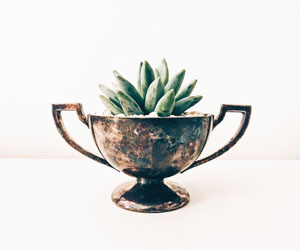 Artistic Innovation Meets Sustainability
Artistic Innovation Meets Sustainability
Green handmade goods are a testament to the union of creativity and environmental responsibility. Crafters and artisans across the globe are channeling their talents to produce items that not only serve a functional or decorative purpose but also adhere to eco-friendly principles. These goods are often made using natural or repurposed materials, creating a harmonious blend of artistry and sustainability.
Supporting Local Economies
One of the significant advantages of green handmade goods is their role in supporting local economies. Artisans and crafters, often small-scale businesses or individuals, contribute to their communities by crafting unique items. This helps strengthen local economies and reduces the carbon footprint associated with mass-produced, globally distributed products.
A Reduction In Waste
The process of creating green handmade goods encourages a reduction in waste. Many artisans rely on repurposed or upcycled materials, diverting items that might have otherwise ended up in landfills. The upcycling trend, in particular, is a testament to the innovative and sustainable approach taken by crafters.
Customization And Personalization
Green handmade goods offer a level of customization and personalization that is often lacking in mass-produced items. Artisans can tailor their creations to meet the unique needs and preferences of their customers. This not only reduces overconsumption but also fosters a deeper connection between the product and its owner.
Craftsmanship And Artistry In Clay
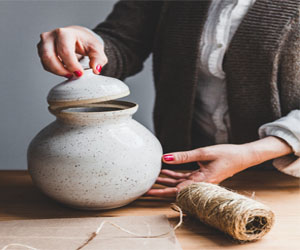 The Creative Process: The creation of handmade ceramics begins with selecting the right type of clay, which can range from earthenware to stoneware to porcelain, each offering unique characteristics and possibilities. Once the clay is chosen, it's hand-worked into the desired shape, whether a functional piece like a bowl or a purely decorative sculpture.
The Creative Process: The creation of handmade ceramics begins with selecting the right type of clay, which can range from earthenware to stoneware to porcelain, each offering unique characteristics and possibilities. Once the clay is chosen, it's hand-worked into the desired shape, whether a functional piece like a bowl or a purely decorative sculpture.
Artists often experiment with textures, patterns, and surface treatments to give their pieces a distinct character. They may carve, incise, or use various glazing and decorating techniques to achieve their artistic goals. Each piece reflects the artist's individual style and creative expression.
The Human Touch: What sets handmade ceramics apart is the human touch evident in every detail. These pieces bear the imperfections and idiosyncrasies that result from the artist's hands, making each item truly unique. The texture of the clay, the nuance of the glaze, and the individual characteristics of the artist's work contribute to the rich diversity of handmade ceramics.
Functional And Decorative Art: Handmade ceramics serve a dual purpose in both the realms of functional and decorative art. Many artists create pottery that is not only beautiful but also functional, such as mugs, plates, and vases. These pieces add a personal and artistic touch to everyday life, enhancing the aesthetic experience of daily rituals like enjoying a cup of coffee or arranging flowers.
On the other hand, decorative ceramics explore the boundaries of the medium and often serve as standalone art pieces. Sculptural and abstract in nature, they challenge conventional notions of pottery and ceramics, pushing the limits of what can be achieved with clay.
The Role Of The Artist: Handmade ceramics emphasize the role of the artist as a creator, with each piece reflecting their unique perspective, skill, and creativity. These artists invest time and energy into honing their craft and often form a deep connection with the materials and the process itself.
A Symphony Of Flavors And Aromas
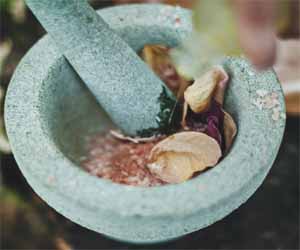 The beauty of herb gardens lies not only in the aromatic and flavorful treasures they offer but also in the diverse range of herbs that can be cultivated. These multifaceted gardens are a testament to the incredible variety of plants that can be grown for culinary, medicinal, and aesthetic purposes. In this article, we'll explore the world of herb garden diversity, celebrating the rich tapestry of flavors, aromas, and colors it can bring to your life.
The beauty of herb gardens lies not only in the aromatic and flavorful treasures they offer but also in the diverse range of herbs that can be cultivated. These multifaceted gardens are a testament to the incredible variety of plants that can be grown for culinary, medicinal, and aesthetic purposes. In this article, we'll explore the world of herb garden diversity, celebrating the rich tapestry of flavors, aromas, and colors it can bring to your life.
The Many Faces Of Herb Diversity
Herb gardens are a treasure trove of plant diversity. They encompass a vast array of herbs, each with its unique characteristics and uses:
Culinary Herbs: These are the culinary classics like basil, oregano, rosemary, and thyme, which infuse dishes with diverse flavors, from sweet and fragrant to earthy and robust.
Medicinal Herbs: Herbs like chamomile, lavender, and echinacea have been used for centuries for their healing properties. They offer a diverse range of remedies, from soothing teas to natural salves.